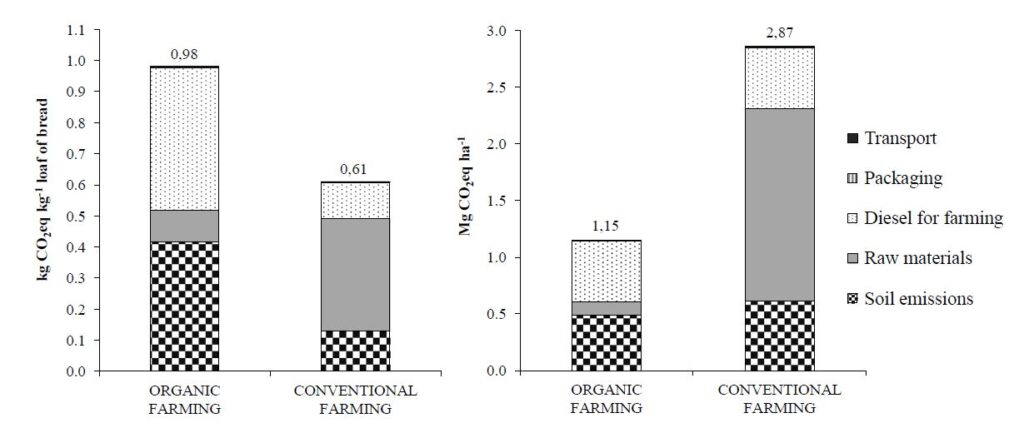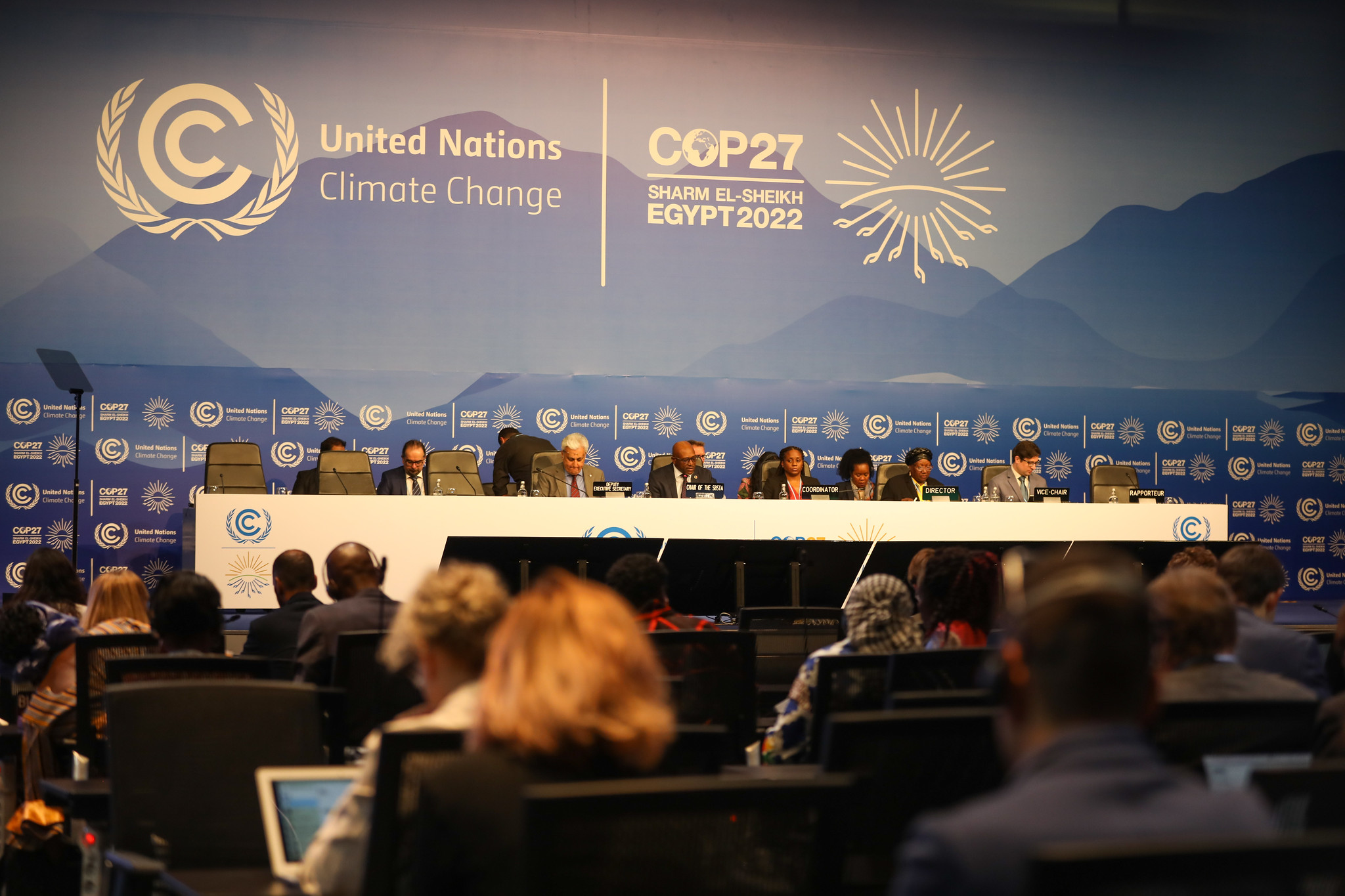As the world is strengthening its efforts to design a more sustainable future, conventional agriculture as we know it must be left behind and organic agriculture is emerging as a potential solution.
The modern agricultural system – alias “intensive farming” or “industrial agriculture” – was able to meet the growing global demand for food due to rapid population increase, thanks to its ability to maximize yields and economic returns per unit of available land. However, the sector’s heavy use of chemicals pollutes both water and air, affecting the environment and ecosystems and increasing health risks for agricultural workers and consumers of food due to pesticide residues.
Moreover, the so-called AFOLU sector – which includes agriculture, forestry, and other land uses – is responsible for just under a quarter of global anthropogenic greenhouse gas emissions, second only to the electricity and heat production sector. Yet this sector does have unique potential: land can absorb carbon dioxide instead of releasing it and the key to realizing its potential resides in how sustainably it is managed.
GHG emissions generated on a hectare of land with organic farming are attributed to a smaller quantity of products, resulting in a higher carbon footprint of most organic products compared to similar ones obtained with conventional agriculture
Organic farming is one of the responses to the need for more sustainable agriculture. It limits environmental and health impacts and preserves biodiversity, water quality, and ecological balance.
On the other side of the coin, this agricultural system has relevant weaknesses that have slowed its widespread adoption. The productivity of organic agriculture is comparatively lower, and therefore using it to replace conventional farming is not yet considered an option if we want to meet the food requirements of a growing population. Furthermore, proving its limited environmental impacts is not enough to conclude that this is the best option for the climate. Nevertheless, the debate is still open and different aspects must be considered when designing a sustainable food system.
Organic or conventional agriculture. Which is better for the climate?
Organic agriculture relies on ecosystem management rather than external agricultural inputs and increases soil carbon sequestration causing less pollution and less GHG emissions per hectare of cultivated land if compared to industrialized agriculture, which uses higher seed density and more agrochemicals for fertilization and plant protection.
Research led by the CMCC Foundation revealed that a unit of land with wheat organic cultivation emits 60% less GHGs than the same unit of land using conventional agriculture.
Unfortunately, less external inputs result in less productivity per hectare. This implies the need to cultivate more land to produce the same quantity of outputs. At the same time, GHG emissions generated on a hectare of land with organic farming are attributed to a smaller quantity of products, resulting in a higher carbon footprint of most organic products compared to similar ones obtained with conventional agriculture.

In the end, what is better for the climate? “The effect of organic farming on climate change is still an open debate in the scientific community. Basically, it depends on the point of view”, explains Maria Vincenza Chiriacò, a researcher at the CMCC Foundation within the division that studies climate change impacts on agriculture, forests, and ecosystem services.

“It depends on whether we look at the total GHG emitted by a hectare of land, or by the final product. Organic farming supporters would say that the atmosphere doesn’t care about how much food you produce with a hectare of land: the atmosphere must deal with GHG fluxes coming from a unit of the land surface, and this should be the focus. Others would say the opposite, as more units of the land surface are needed if we want to guarantee food security to the entire world population producing in an organic regime the same amount of food we produce today”.
Specifically, a study in Nature Communications estimates that the land use increase would span between 16% to 33% in a complete global conversion to organic farming. According to other research recently published in the same journal, a 100% conversion to organic agriculture in England and Wales – an area characterized today by high yields compared with other parts of the world – would imply 1.5 times more land use than using conventional practices. On the contrary, another study reveals that in some regions of the world, yields of organic agriculture can even match those of conventional farming, requiring no land use increase.
The right question to pose
Global population is projected to grow from 7.8 to 9.6 billion by 2050. Under the business as usual growth, this entails a 56% food gap between crop calories produced and those needed (2010-2050, WRI). Should we then push for increased and intensive production to guarantee food security?
“The question we should pose today is different” clarifies Dr. Chiriacò. “The urgent question we need to answer – and which might have an impact on our entire food system – is: do we really need to produce so much food? There are many paradoxes in today’s food system that should be tackled before proposing intensive agriculture as the solution. Data shows that current agricultural production can already supply enough food for global population in 2050. Nevertheless, food security is not ensured due to a range of causes such as inequalities, bad distribution, conflicts, food loss and waste, and climate change.”
Without aiming to completely replace existing agricultural systems with organic agriculture, there is much that experience and scientific research can do by combining technological innovation with the recovery of traditional practices
More than 820 million people do not have enough to eat, according to the FAO. In the meantime, the WHO warns that around 2 billion adults are overweight. Moreover, one-third of the food produced is lost or wasted at all levels of the food supply chain: amounting to four times the amount needed to feed those lacking access to an adequate food supply. The IPCC Special Report on Climate Change and Land explains that 8-10% of total anthropogenic greenhouse gas emissions are caused by global food loss and waste: these emissions (and associated pollution) have no purpose and must be cut.
“Saving these ‘wasted emissions’ could allow for a reduction in the overall contribution of the food chain to climate change and would make it possible for us to stop demanding such high land productivity, which is causing damage in terms of environmental and health safety”, continues Chiriacò. “Furthermore, another paradox is linked to land competition. Less than half of the global production of cereals is for human nutrition and 40% of agricultural land is used for livestock and biofuels. The required system-change will also ask for dietary shifts, moving from meat and carbon-intensive food to more sustainable and healthy diets.”
The future of agriculture
If the world wants to meet the Paris Agreement commitments and Sustainable Development Goals, the whole agricultural system must change in order to address these paradoxes.
Some argue that the trick to keeping productivity high while cutting emissions and environmental pollution lies in cleaning up the use of synthetic fertilizers. Others are looking for new ways of increasing productivity per unit of land with fewer inputs – and, thus, more efficiency.
“Organic agriculture accounts for less than 2% of currently cultivated lands, 7.7 % if we look at the European Union”, explains Chiriacò. “Given these numbers, the development of organic farming is just beginning, and there is much room for improvement in the yield and productivity of the sector. There is much that experience and scientific research can do by combining technological innovation with the recovery of traditional practices, while reducing food losses and waste, in the view to completely replace existing agricultural systems with organic agriculture in the future.”
The FAO (Food Agricultural Organization) supports the paradigm of Sustainable Intensification, where innovative technologies help farmers to achieve these objectives. Such techniques include forecast models and decision support tools that allow farmers to take a more targeted approach and hence reduce their dependence on chemical interventions. The Climate-Smart Agriculture approach pursues the triple objectives of sustainably increasing productivity and incomes, adapting to climate change and reducing greenhouse gas emissions where possible. Policymakers can support alternative systems for food production by funding research, training, and knowledge transfer.






